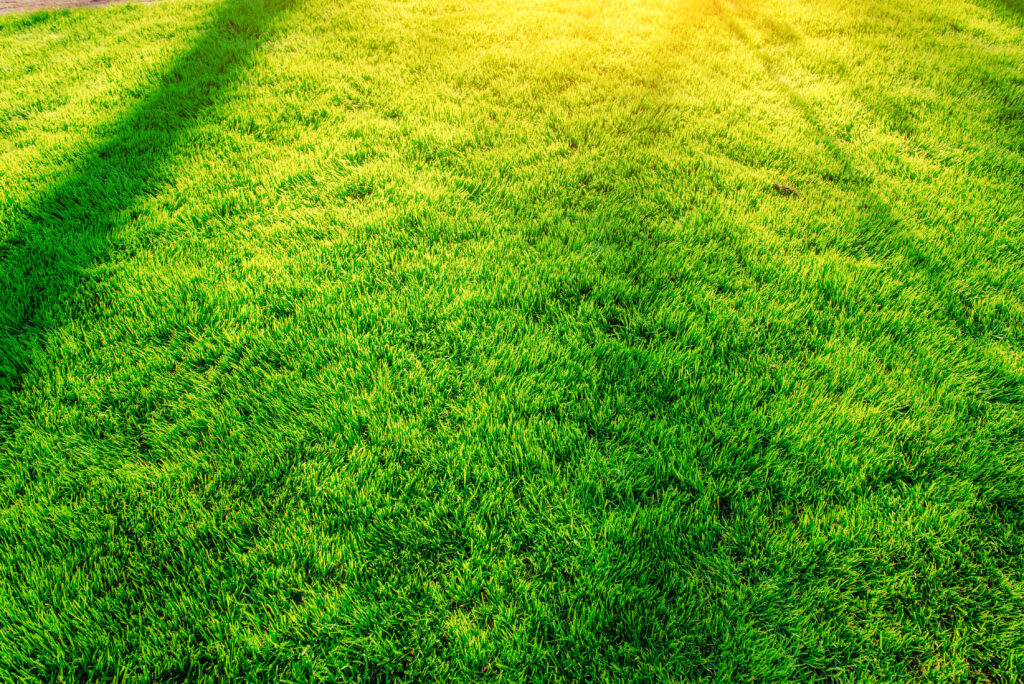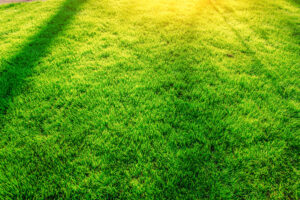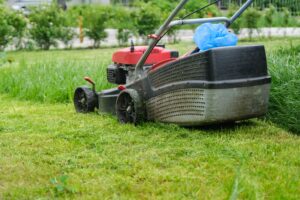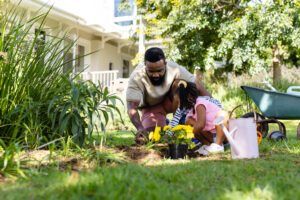To keep your lawn green, dense, and healthy, it is essential to give it the treatment it needs. What are aerating, overseeding, and fertilizing? Why do they need to be done, how should they be done, and when is the best time to do them? Our guide will answer these questions and guide you through what you need to know.
What Is It and Why Should It Be Done?
Aerating, overseeding, and fertilizing are a three-step lawn treatment process that should be done to maintain your lawn at its best all year round. Each of these steps has its own benefits, but they work together to provide the best results.
-
- Aeration: The process of creating holes in the soil to allow water, air, and nutrients to penetrate deeply. This improves root development.
-
- Overseeding: Planting new grass seeds into an established lawn. This fills bare spots, improves grass density, and enhances lawn color.
- Fertilizing: Applying fertilizer delivers essential nutrients to young, growing grass, optimizing seed germination and quick establishment.
How Should It Be Done?
In most cases, your maintenance gardener does not provide these services without being asked. They might or might not offer this service, so ensure you communicate and know where it stands.
-
- Aeration: You can aerate a small lawn with a manual lawn aerator, rent or purchase a mechanical aerator, or hire a lawn aeration service.
-
- Overseeding: Choose seeds that match your current grass color and texture. Spread the seeds by hand, walking in one direction and then in the opposite direction at right angles for complete coverage. Alternatively, use a seed spreader for more efficient coverage.
-
- Fertilizing: Using a spreader provides more even coverage than fertilizing by hand. Be cautious with fertilizers, as improper application can burn the lawn. Ensure the grass blades are dry before applying fertilizer and follow watering instructions afterward.
The final step is to water the soil thoroughly within 48 hours after aerating, overseeding, and fertilizing. Continue to water every 2 to 3 days for 2 to 3 weeks to aid in the speedy regrowth of new turf. Note: Keep kids and pets off the lawn for the time recommended on the fertilizer label, usually 24 to 48 hours.
When Should It Be Done?
In brief, it is recommended to go through the aeration, overseeding, and fertilizing process twice a year: in early spring and early autumn. Doing so will keep your lawn green, thick, and healthy.
There are times when aeration, overseeding, and fertilizing can cause more harm than good. For example, we do not recommend this treatment during very hot weather. In addition to the two recommended times a year, consider these treatments if your turf exhibits any of the following unwanted conditions:
-
- Dry and/or compacted soil
-
- Uneven growth of grass
- Insufficient drainage
Order of Operations
There is some straightforward guidance regarding the order in which to perform these steps. Make sure to aerate first to create the holes needed for the seeds and fertilizers to penetrate deeply and increase contact between the nutrients and the soil.
By following this 3-step process, you can maintain a healthy, vibrant lawn all year round. Happy lawn care!














